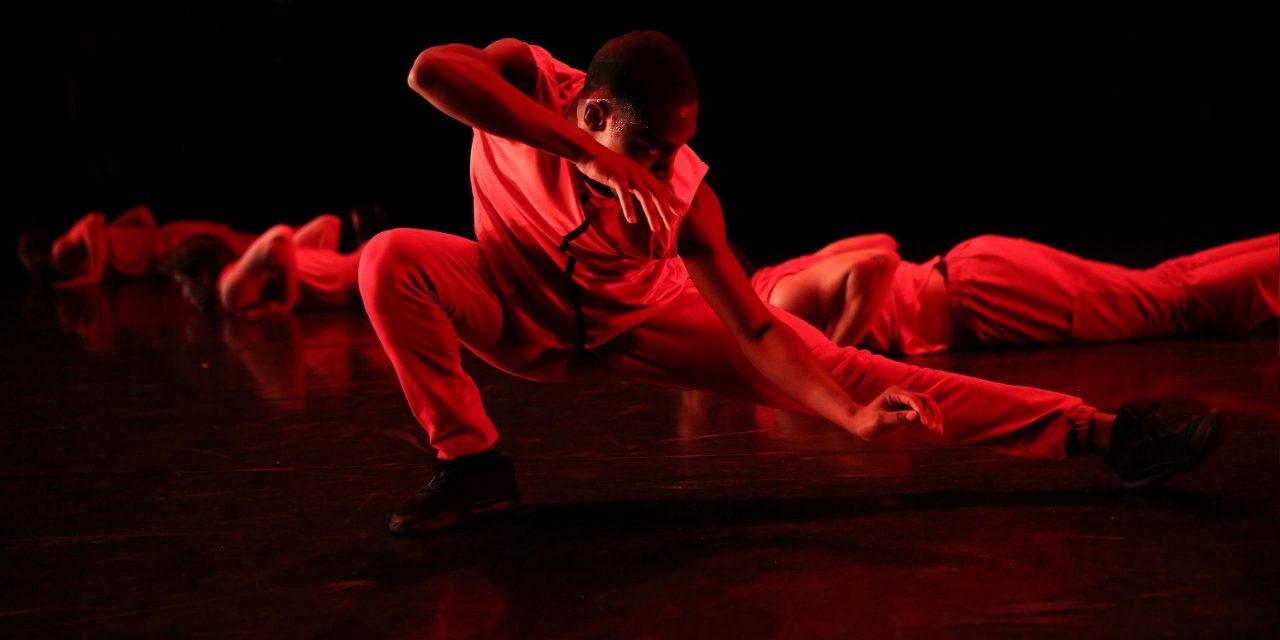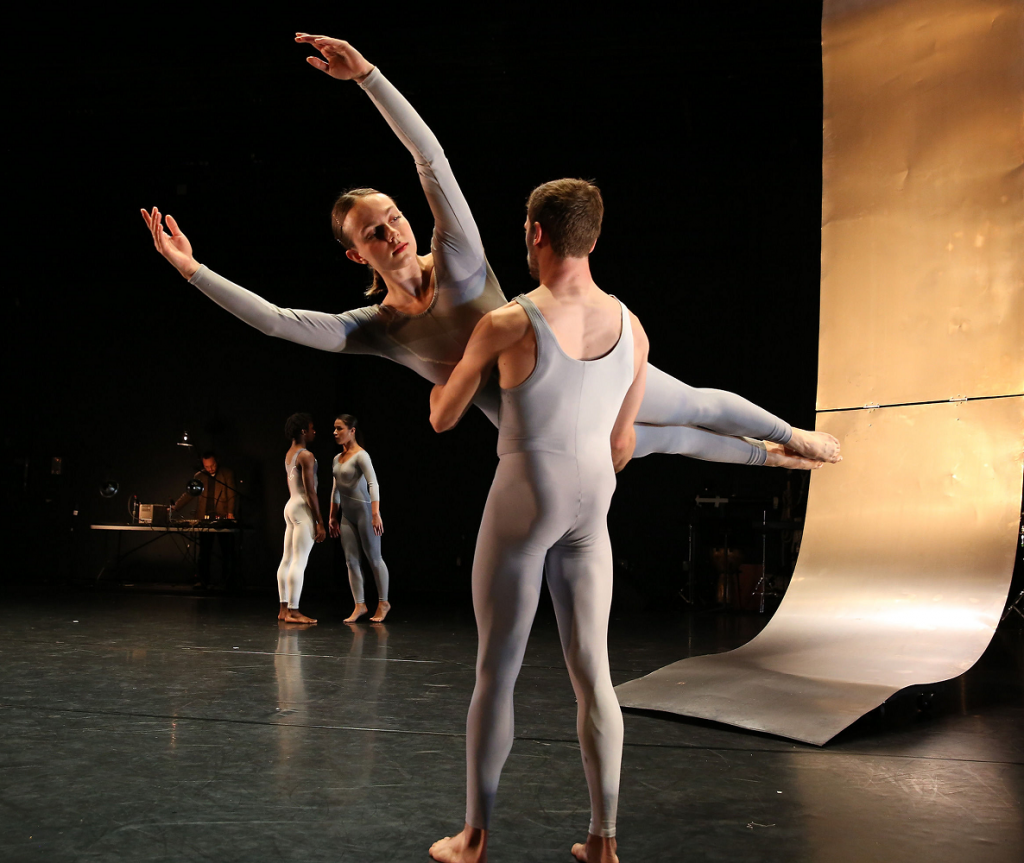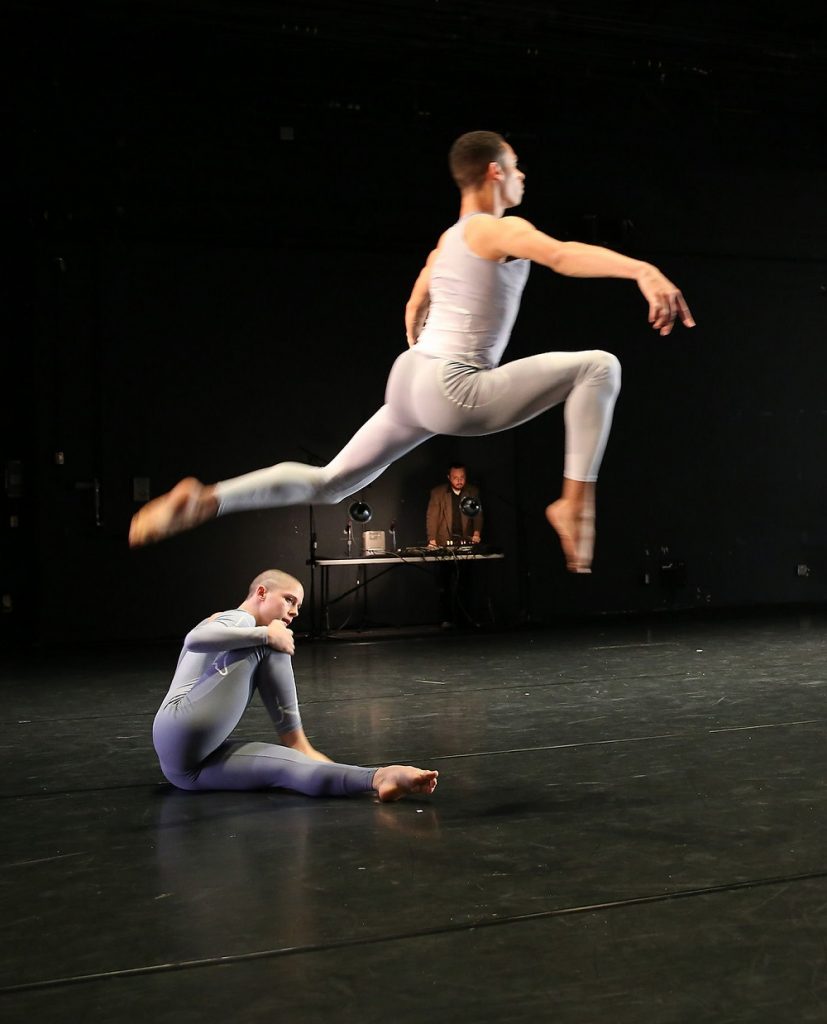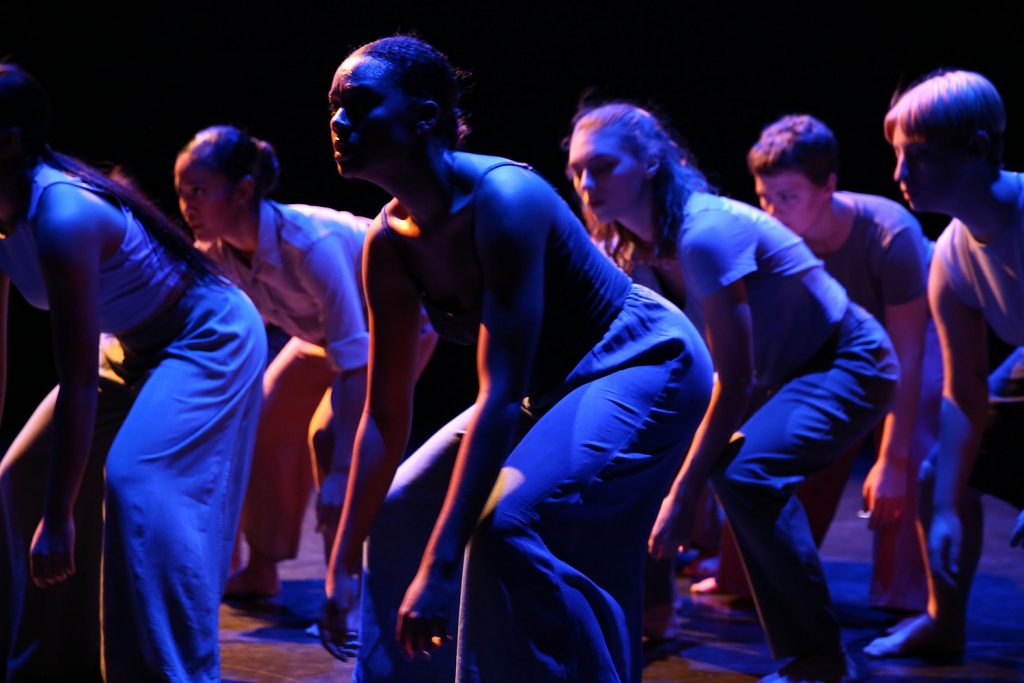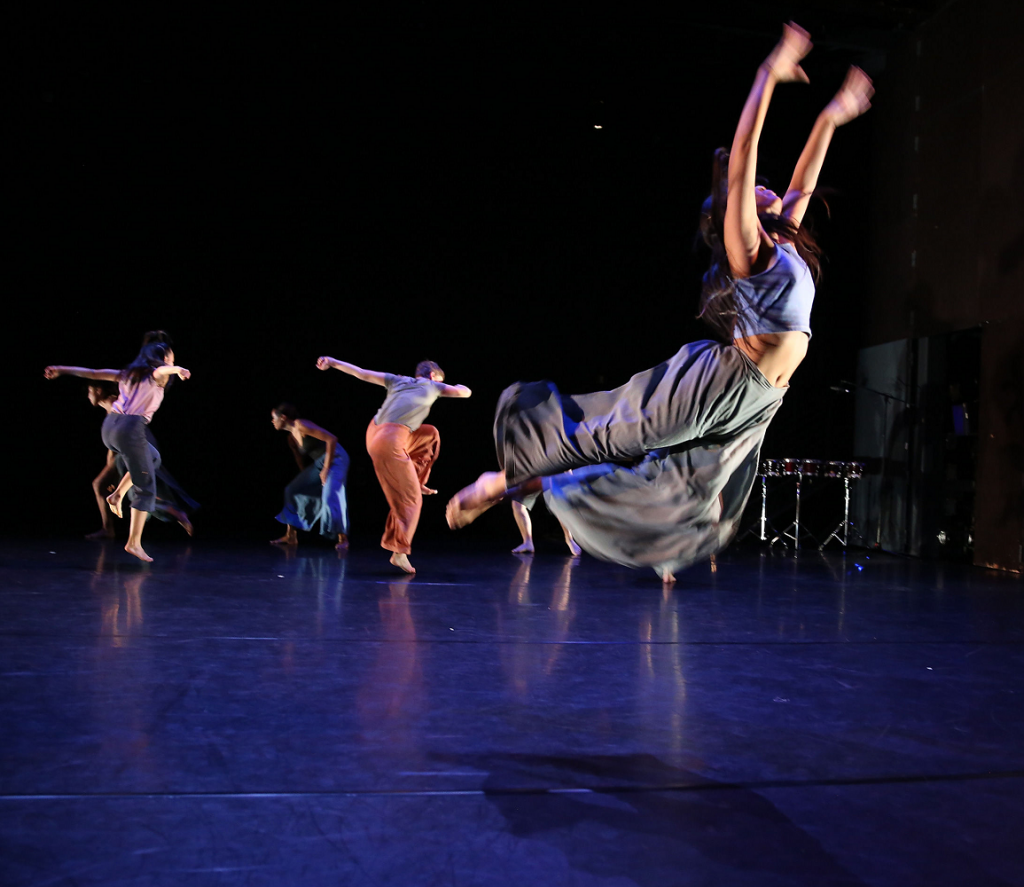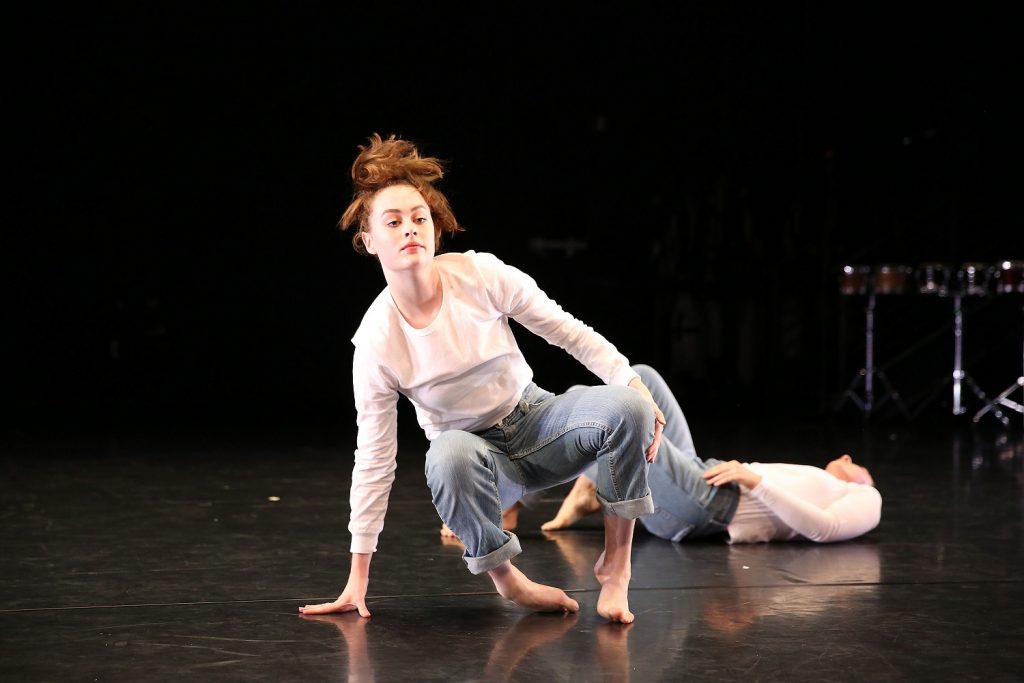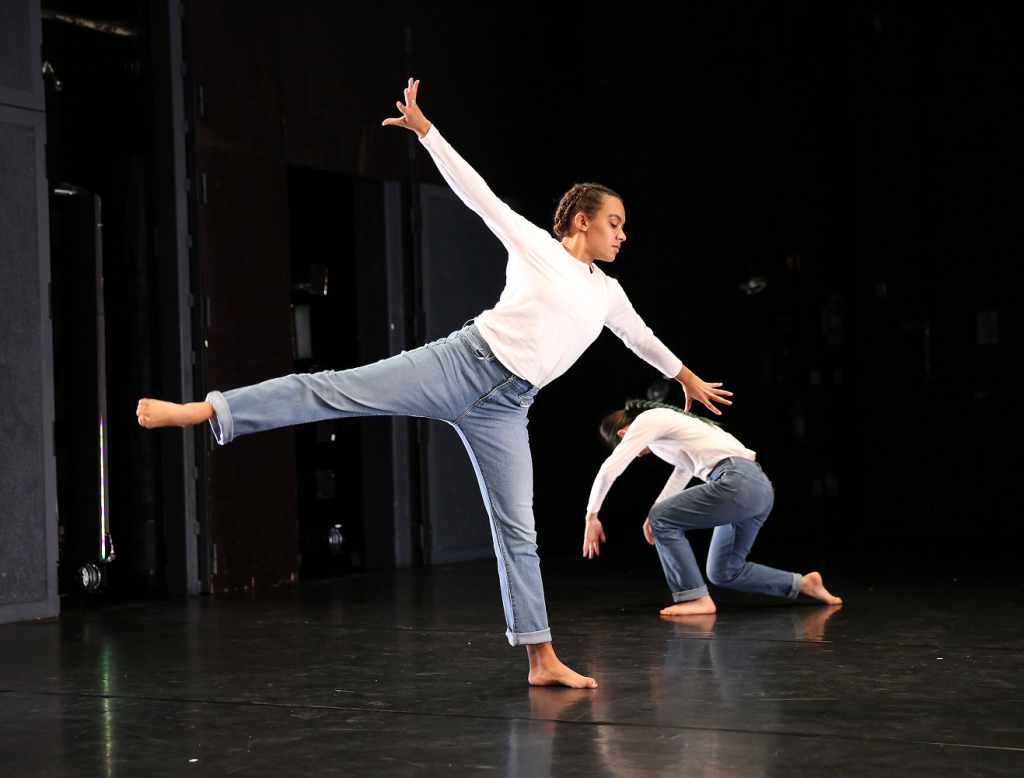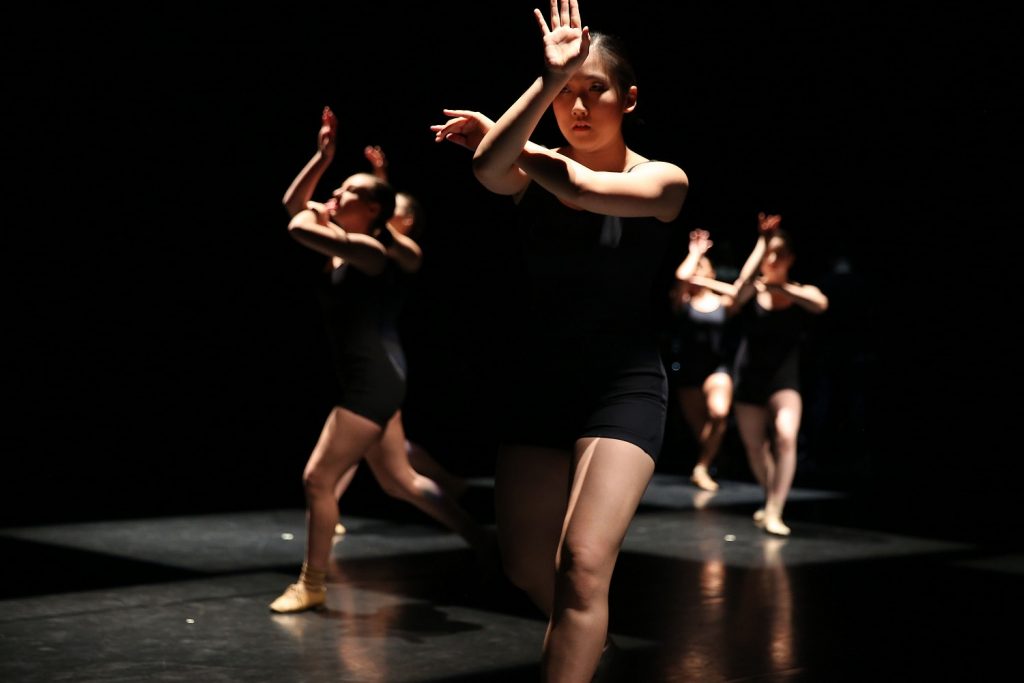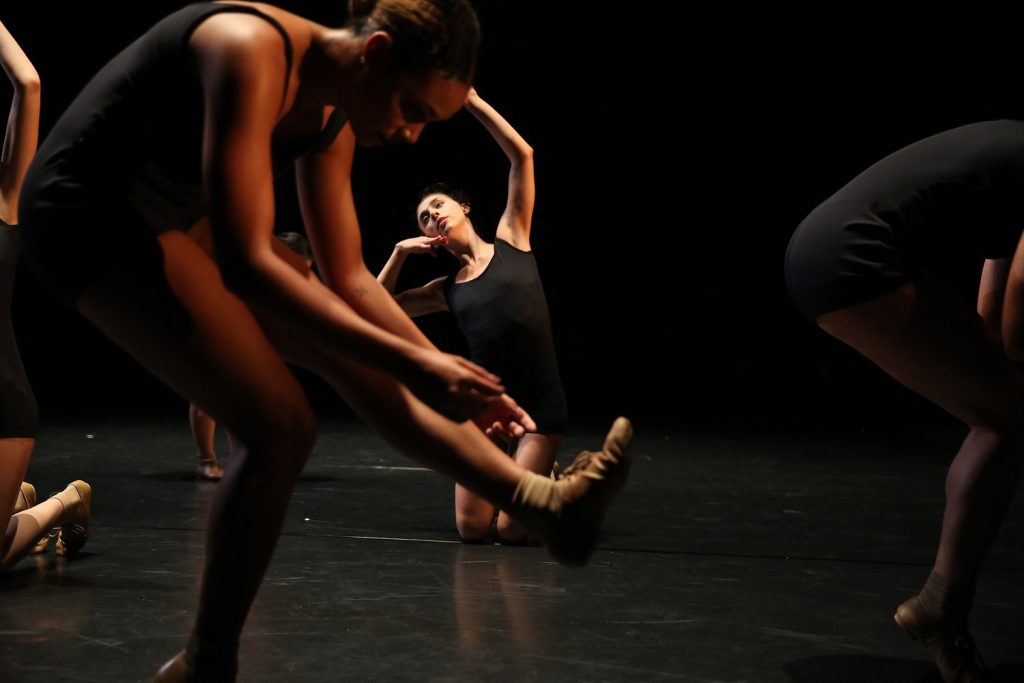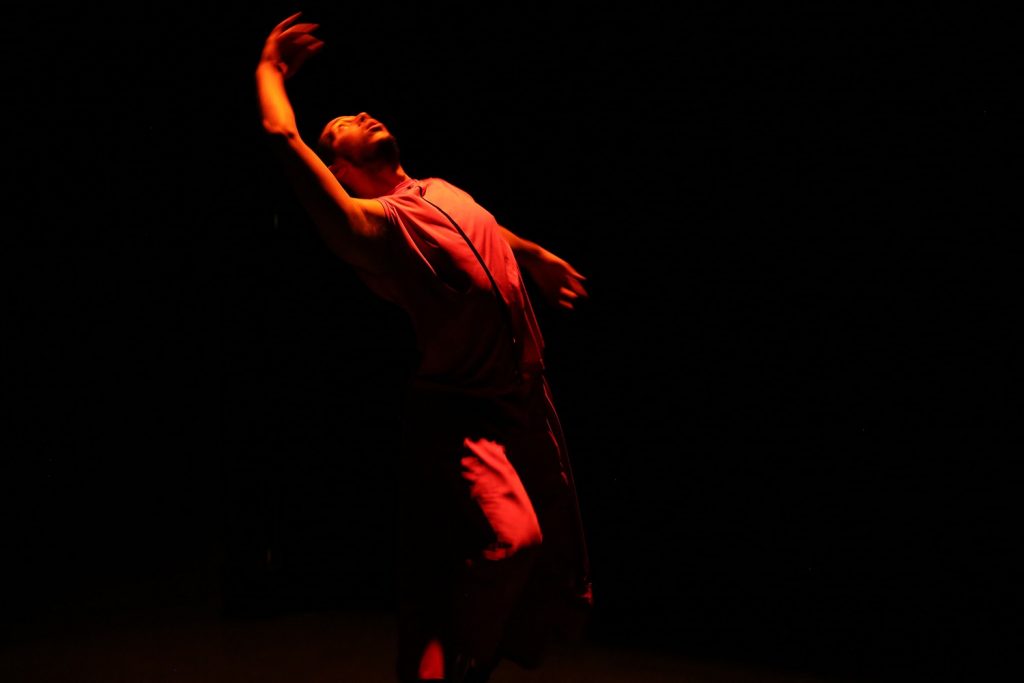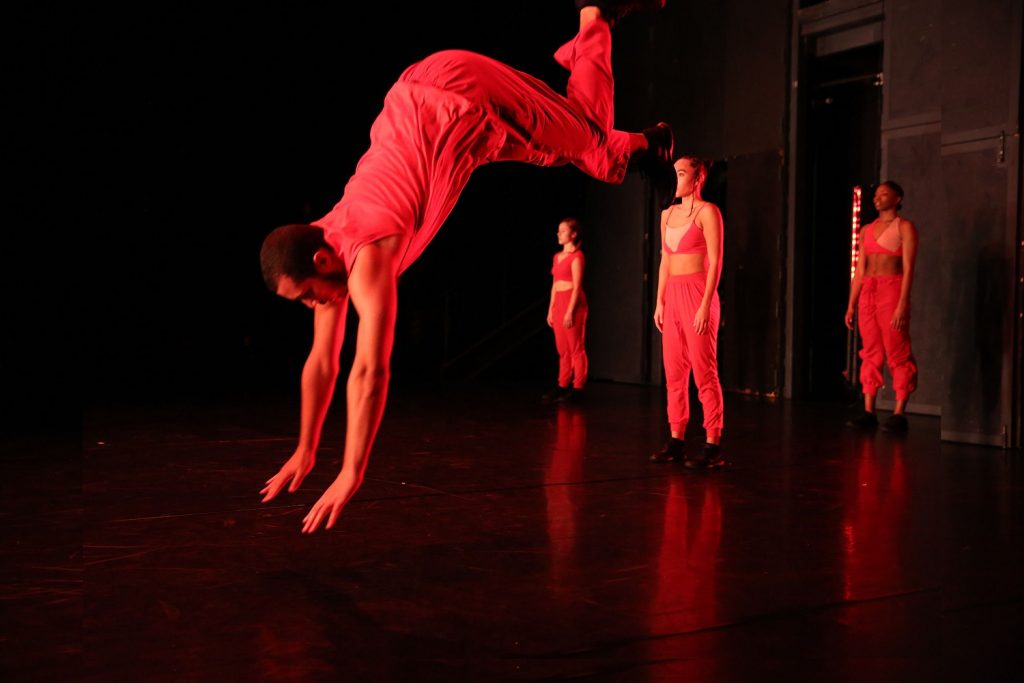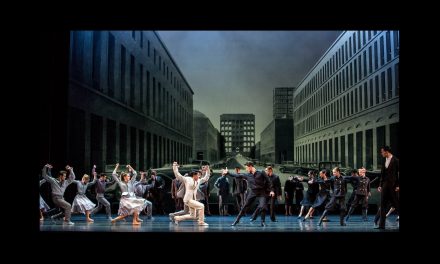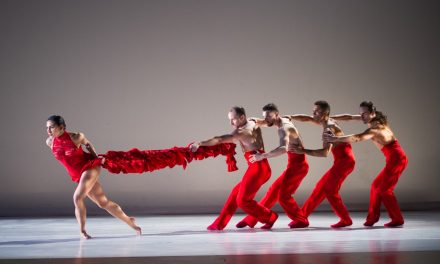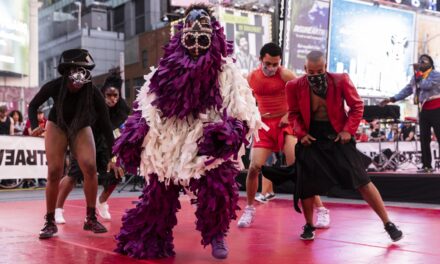Walt Disney and his brother Roy founded California Institute of the Arts (CalArts) in 1961 with programs in art and music. It was in 1971, a decade later, that the college expanded to offer programs in design, film, theater, and dance. Bella Lewitzky was a member of the first dance faculty and her musical director, Larry Attaway, would become the Associate Dean and member of the faculty at CalArts from 1972 until 1997. The current Dean, dance administration and member of the dance faculty is French born Dimitri Chamblas. Among his many accomplishments, since 2011, Chamblas has worked closely with choreographer Benjamin Millepied on a film project that is still in progress.
The Sharon Disney Lund School of Dance presented its Winter Dance concert at REDCAT. The program included five works by notable choreographers Merce Cunningham, Jawole Willa Jo Zollar, Trisha Brown, Jiří Kylián, and Rennie Harris. The dancers performed these works very beautifully and the faculty should be commended for presenting an evening comprised entirely of works by well-known dance artists with such diverse and distinct styles.
This article is not a review, as it is LA Dance Chronicle’s policy not to review university dance concerts. The entire CalArts Winter Dance program was indeed well worth attending. I was inspired to attend so I could revisit Merce Cunningham’s Canfield and to share my memories of it as part of the Merce Cunningham Centennial Celebration. I will also write a brief synopsis of the other four works on the program.
Merce Cunningham was born on April 16, 1918 in Centralia, Washington. He attended the Cornish College of the Arts in Seattle and then moved to New York City to join the Martha Graham Dance Company. In the mid-1940s, Cunningham joined forces with musician and composer John Cage and together they founded the Merce Cunningham Dance Company in 1952 which went on to become one of the most recognized modern dance companies in the world. Per Cunningham’s instructions, the company was disbanded two years after his death in 2009.
As part of the Centennial Celebration, former Cunningham company member Holley Farmer was commissioned to stage excerpts of Cunningham’s 1969 work Canfield on ten of the CalArts dance students. I had the great honor of being a member of the original cast of Canfield along with Merce Cunningham, Carolyn Brown, Meg Harper, Susanna Hayman-Chaffey, Sandra Neels, Chase Robinson, Valda Setterfield, and Mel Wong. So, for me, this was a trigger of many fond memories.
According to the Merce Cunningham Trust, “The dance’s title refers to a game of solitaire that Cunningham played while on vacation. Using chance process to determine the sequence of movements, Cunningham assigned a word indicating a particular motion to each card in the deck, with red and black suits denoting fast and slow movements respectively. Pauline Oliveros composed the score, and Robert Morris designed the set, which featured a gray vertical beam, moving back and forth across the front of the stage. A light at the back of the beam shone onto the backcloth, intensifying the illumination when a dancer moved past.”
Cunningham also incorporated his now famous chance procedures when presenting Canfield to audiences. The dance was composed of 13 sections with an equal number of transitions to connect them. On the day of each performance, Cunningham would, by chance, arrange these 13 sections into a different order. The dancers, therefore, had to not only remember which section included what movement, but also memorize the order they appeared in. To assist them, the order was posted on either side of the back-stage area. In full disclosure, however, during my tenure with the company we often wrote the dance’s order on the inside of our forearms. We did so because many times we were onstage when a section ended and could not make use of the postings. Working with Cunningham was challenging both physically and mentally. He often rearranged the order of his works and so if one went to several performances of a specific dance, it would probably be different each time.
For the premiere of Canfield at the Brooklyn Academy of Music (BAM), the set by Robert Morris featured a tall, narrow gray box that reached from the top of the presidium to the stage floor. Inside, facing upstage, were a series of powerful beams, resembling car lights, in pairs down the length of the set. This tall structure silently moved back and forth across the stage on a track and when it was moved across the path of the dancers, it was blinding. Eventually the set had to be discarded because it was expensive to tour with and the rigging was complicated to install.
The music for Canfield was amazing and also challenging for the dancers and the audience. Titled In Memoriam: NIKOLA TESLA, Cosmic Engineer, Pauline Oliveros’ score was based on Tesla’s theory that sound could be used to destroy buildings. The musicians for the original Canfield included David Tudor, Gordon Mumma and David Behrman. They and other company staff members moved around the theater with walkie-talkies and special instruments locating the support beams within the theater walls, and also their conversations were recorded. Once this was accomplished, they returned to their electronic music equipment and the began creating the music that became louder and louder. Soon, the floors of the theater and stage began to vibrate. I remember hearing the gel frames in the lighting equipment above our heads rattling and often worried that one would come crashing down on my head. One got the sense that if the dance went on long enough that the building would indeed collapse. Fortunately, that never happened.
The Canfield costumes were designed by artist Jasper Johns. They were plain leotard and tights dyed gray, but Johns had each one of the dancers stand inside an enclosed area while he sprayed our costumes with illuminous paint that would glow when the light beam moved in front of them. Sadly, the costumes only shone while they were standing off stage in the wings.
The CalArts students did an incredible job, especially considering that they were not studying the Cunningham technique which requires a strong background in ballet and modern technique. Using 9 of the 13 sections, Holley Farmer titled the work CANFIELD MINEVENT, and staying true to the chance procedures, the order for the sections changed nightly.
The cast of dancers included Rosalyn Bataille, Audrey Collette, Damontae Hack, Freeda Handelsman, Madison Lynch, Will Mallett, David McCall, Nicholas Ruscica, Makayla Sifuentes, and Sky Spiegel. The musicians who performed Oliveros’s electronic music were Ben Richter, Justin Scheid, and Davy Summer. The silver paneled sculpture was by Sevim Abaza.
SHELTER was a very moving work about survival that inspired by the aftermath of hurricane Katrina in 2005. It was originally choreographed for Urban Bush Women by Jawole Willa Jo Zollar and staged for Winter Dance by Marjani Forté-Saunders. Before rehearsals began, the CalArts dancers were “asked to consider their own relationship to displacement, inequity, and resilience”.
The cast strong cast of Shelter were Kayla Aguila, Maya Allen, Alice Ortona-Coles, Lilia Deering, Zee Garland, Chenhui Mao, Lizzy Noriega, Orla Regan, Odessa Uno, and Im Vorapharuek. A powerful reading was performed by Toritseju Danner and the live music was performed by drummer Emilia Moscoso Borja.
Another memorable work on the program was a 1976 work by Trisha Brown (1936-2917) entitled SOLO OLOS, directed by Samuel Wentz. The dance begins with five women dancing a long movement phrase in unison. One drops out and begins calling out directions that include the words reverse, branch, and spill. When she calls instructs a dancer or dancers to reverse, that dancer reverses the phrase. Branch and spill each represent different movement phrases. The program note explains it well: “The dancers go forward and back in the main phrase until they are called into Branch, Spill, or into Reverse. The caller makes a mess and then cleans it up.” Indeed, they begin in unison, and after being called into disarray, end back in unison. Performed in silence, it was a fun dance to observe.
The cast of Solo Olos was Chloe Crenshaw, Nia Scovel, Madyson Thornquest, Yunni Lin and Caller Keely Uchida.
FALLING ANGELS, choreographed by Jiří Kylián and set to Steve Reich’s drumming/part 1 (1970/71) and performed live by Brandon Carson, Katie Eikam, Jason Fragoso, and Kevin Good was percussive and a work about the art of performing and all the emotions that come with it. It was about contrasts between discipline and freedom, including the lighting design conceived by Jiří Kylián, realized by Joop Caboort, and adapted here by Kees Tjebbes, involved numerous lighting shifts throughout the work.
The cast included Kayla Aguila, Zee Garland, Kait McKinney, Nadia Muhammad, Paige O’Mara, Liessa Son, Maya Allen, and Jiwon Park.
FACING MEKKA was choreographed by Rennie Harris and staged by CalArts faculty member Nina Flagg who is a former of Rennie Harris Puremovement and was in the original cast of Facing Mekka. The dance is divided into three sections and moves from dynamic and fast movement into introspective and psychosomatic investigations of self.
The often-driving music score was by Darrin Ross and the talented cast of dancers included Annmarie Arcuri, Delisa Bass, Justin Farmer, Mia Givens, Kehari Hutchinson, Emara Neymour-Jackson, Seamus Pearl, Tetiana Sklyarova, and Andrew Tiamzon.
For more information regarding the Merce Cunningham Centennial Celebration, click here.
For more information on the Sharon Disney Lund School of Dance, click here.

